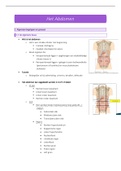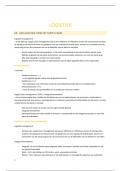Other
BCH2602 Bioenergetic Exam Q&A
- Course
- Institution
- Book
A complete compilation of old exam papers for BCH2602 from 2016 to 2019 (first semester) together with the answers for these questions. Answers were obtained from the prescribed textbook, as well as accredited online sources to further help with understanding of concepts.
[Show more]














